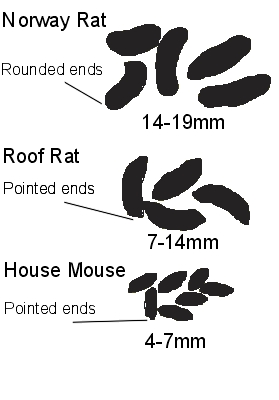Solve problems in and around your home.
Start Problem Solver

Rats and mice produce many droppings. Mice will produce up to 80 a day. It is often these droppings that are the first sign of an infestation of rats or mice. It is possible to identify the species from the appearance of the droppings.

Rodents (rats and mice) produce droppings and urine almost continually. Mice will produce up to 80 droppings per day and constantly dribble urine. If an infestion is left to become established a strong musty odour will build up. This odour is an indiction of a large infestation that has been present for some time.
Rodent pests (rats and mice) in New Zealand carry and transmit disease to humans. The transmission of disease from animals to humans is known as zoonosis.
Examples incude:
Leptospirosis: Leptospira interrogans
In humans, Leptospirosis (aka Weil's disease) can cause a wide range of symptoms, including:
Many of these symptoms can be mistaken for other diseases. In addition, some infected persons may have no symptoms at all.
How the disease spreads:
Salmonellosis: Salmonella typhimurium and Salmonella bovis-morblficans
How the disease spreads:
Always wer gloves and a dust mask when entering places where rodents travel such as roof voids and sub-floors and wash hands afterwards.
Always wear gloves and a dust mask when entering places where rodents travel such as roof voids and sub-floors and wash hands afterwards. (See Did You Know section).

Targets Rats & Mice. A single block is lethal to rodents.

Easy to use indoor rodent control.

Prefilled Mice Bait Station to keep people and pets safe, and baits secure and protected from moisture and conta…